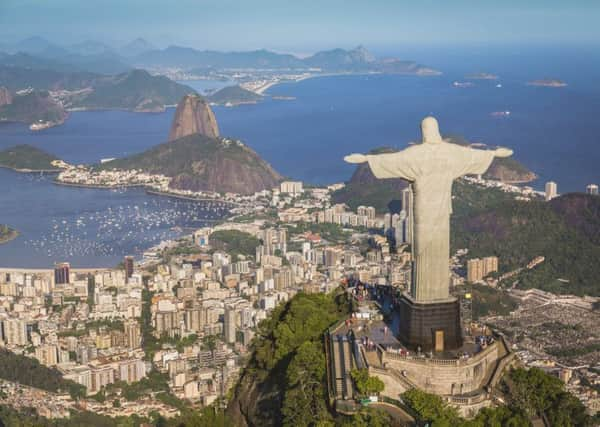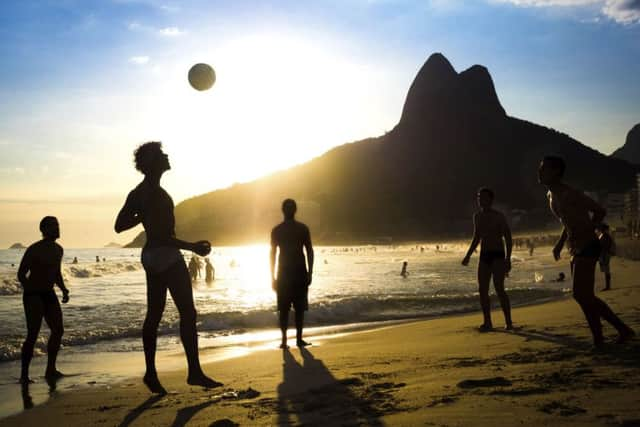The Scots who helped build Brazil through freedom and sport


He was the six foot redhead from Lanarkshire lauded for his pivotal role in Brazilian independence from Portugal.
Lord Dundonald, Thomas Cochrane, (1775-1860), first arrived in South America after becoming embroiled in financial scandal at the London Stock Exchange .
Advertisement
Hide AdAdvertisement
Hide AdDespite being kicked out of the Royal Navy and stripped of a knighthood as a result, Cochrane was to quickly shake his disgrace by flexing his reputation as a master of coastal warfare.


First arriving in Chile with his wife and two children, Cochrane - who earned the nickname Sea Wolf for his daring ways - took control of the Brazilian Navy in 1823 after first assisting Chile and Peru in securing independence from Spain.
In Brazil he is credited with rinsing the country of all Portuguese troops after forcing them to evacuate in a string of raids and blockades.
After pushing the Portuguese out of the northern state of Bahia, Cochrane and his fleet attacked the fighters once again as they set sail across the Atlantic.


In legendary fashion, he forced troops at Maranhao to surrender after telling them a vast Brazilian fleet was on its way to attack. In reality, he had sailed there on his own. It was not the only time the bluff was used to reclaim Brazil from it colonists.
Cochrane was granted the title of Marquess of Maranhao in the Empire of Brazil and awarded a coat of arms after returning to Rio in 1824.
The aristocrat, who finally cleared his name in relation to the stock exchange scandal and died in London in 1860, was by no means the first Scot to have arrived on Brazilian soil.
In John Hemming´s book Red Gold; the conquest of the Brazilian Indians a reference is made to three Scottish soldiers who contracted the pox from Indian women while serving with French forces in the Guanabara region of Rio de Janeiro in 1555-60.
Advertisement
Hide AdAdvertisement
Hide AdLarge number of Scottish mercenaries were also employed by the Dutch during the 17th Century when they held Recife in the north of the country for around 40 years.
But it was flow of people from Scotland from during the 19th Century that was to help shape the modern Brazil first formed by Cochrane and his naval efforts.
Civil Engineers David Angus, from Dumbarton, was to build vast wealth building railways and harbours across Brazil and her neighbouring countries in the late 1800s.
The country drew a new fleet of workers as it sought technical skills from around the world.
Among new arrivals were George Gracie, from Carronhill in Dumfriesshire, emigrated to Brazil in 1801.
As he set sail for South America, he would have had no inkling he was to become a forefather to Brazil’s famous Gracie family - the creators and champions of Brazilian Jiu Jitsu maritial art.
But it was football, the driver of Brazilian national pride, where Scots were to leave a scintillating legacy.
The title of who introduced football to Brazil has been hotly debated for many years.
Advertisement
Hide AdAdvertisement
Hide AdJust five years ago, historic census records helped identify the Scot said to have organised the first match on Brazilian soil.
Thomas Donohoe, originally from Busby, Renfrewshire, arranged a five-a-side game in April 1894 at the textile factory where he worked in Bangu, west Rio de Janeiro.
The dye expert had emigrated to Brazil the year before.
The Scot, who had set up a football league at home, was horrified to discover no one played the sport - or even heard of it - in his adopted land.
Donohoe wrote to his wife, Elizabeth, asking her and their children to join him - and to bring a football.
Shortly after her arrival, in September 1894, a match took place in the field beside the textile factory - a six-a-side game played by British workers.
Donohoe has competed for the title of the man who brought football to Brazil against Charles Miller, the son of a Scottish railway engineer
He organised a match on 14 April 1895 between railway and gas workers in Sao Paulo - which was long considered the first game in the country.
Miller went on to form Brazil’s first formal football championship and play for Sao Paolo Athletic Club football team in the early 1900s.
Advertisement
Hide AdAdvertisement
Hide AdAlso to find sporting success in Brazil’s largest city was Archie McLean, a mechanic and association football player from Paisley, who arrived in Sao Paulo in 1912.
McLean, who became known as Veadinho - or Little Deer - on the pitch is credited with introducing the fast style of play which now defines South American football.
He was also to set up Scottish Wanderers FC for his fellow countrymen finding their feet in their new South American home. It was one of the first professional clubs in the country.
DOWNLOAD THE SCOTSMAN APP ON ITUNES OR GOOGLE PLAY